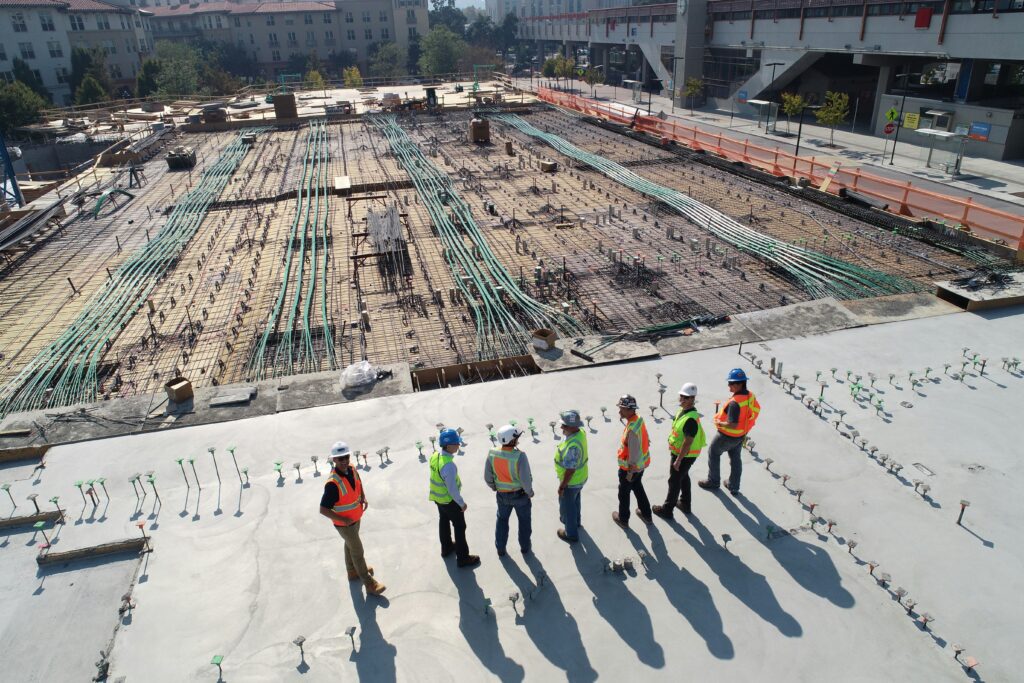

It’s human nature to seek the minimal viable solution — the silver bullet, the holy grail, the golden goose. These metaphors all share the same hope: that something will come along and deliver exactly what we’re looking for to get the job done. But life doesn’t work that way, and neither does business.
This is especially true in the construction industry, where the path to digitization has at times been slower than desired. While the architecture, engineering, and construction (AEC) industry, valued at $12 trillion, is one of the largest in the world it has historically, lagged behind in adopting new technologies, according to McKinsey.
Several factors contribute to this: the complexity that characterizes construction, blocking technological innovation, traditional conservatism, and a lack of support or incentives from government bodies. However, digitalization is gaining traction, and fleet connectivity is reaching a critical mass.

While we’ve have been searching for an ultimate solution, we’ve actually already gotten to a pretty good critical mass of connectivity and digitalization of our assets in the construction industry. Yet, one of the biggest roadblocks to acceleration and revenue that we consistently see is access to the technology.
A recent report states that over 70% of UK construction companies are actively trying to implement new technologies. The critical mass of connected assets combined with new flexibility provided by the emergence of Industry Cloud Platforms as highlighted by Gartner potentially opens up a whole new world of business opportunity. Yet, some companies continue to hold off, waiting for a perfect alignment of technology, cost, and business fit that might never arrive.
The truth is that technology never stops evolving, and business never slows down. Waiting for the perfect time to digitize is a fallacy because it doesn’t exist. Companies that have already embraced digitization are reaping the rewards in profitability and efficiency.
These forward-thinking businesses understand that waiting for the perfect solution is not just unwise, it’s costly. They recognize it would be wiser to invest now and start reaping the benefits knowing gains you make today will not stop you from making future gains when the technology develops.
“The democratization of digital tools on the construction site and in the rental yard will not only impact emissions and enhance safety but also reduce downtime and promotes a sense of ownership.”
Investing in digitization today not only positions your company for immediate gains but also allows space for technology to improve over the coming years, ensuring a gradual but steady progress rather than an indefinite wait for an elusive perfect solution. In a rapidly evolving market, securing your place in the future really does require taking action now.
In construction, the mindset that a flawless solution is required before any action can be taken often leads to the siloing of digital technology and an endless planning phase that rarely translates into tangible results.
“The companies that thrive are those that embrace a minimal viable solution approach. By selecting specific problem areas where digital solutions can be immediately and effectively applied, they enable quick, iterative improvements.”
However, the companies that thrive are those that embrace a minimal viable solution. By selecting specific problem areas where digital solutions can be immediately and effectively applied, they enable quick, iterative improvements.
The democratization of digital tools on the construction site and in the rental yard will not only impact emissions and enhance safety but also reduce downtime and promote a sense of ownership. By equipping workers with the tools to tackle immediate challenges through a minimum viable platform, companies can empower teams to act swiftly, solve real problems, and iterate quickly. This approach fosters a culture of responsibility and innovation, turning frontline insight into real-time value.
Reaping the rewards
Recent data also underpins the urgency of taking action now rather than waiting for perfect conditions. A study by Let’sBuild found that cloud-based software and mobile apps significantly enhance communication and collaboration, leading to improved productivity in construction companies.
Furthermore, these technologies improve resource management, reduce labor and equipment expenses, automate manual processes, and simplify inspections with drones, ultimately enhancing safety.
“The technology landscape will continue to evolve, but those who take action now will be best positioned to adapt and thrive in the future.”
These tangible improvements in efficiency and project outcomes illustrate the benefits of early adoption of digital tools. Additionally, a report from Trackunit reveals that over 50% of construction companies have achieved measurable ROI from their digitization efforts within the first year of implementation. These companies didn’t wait for a perfect solution — they acted with the tools available and quickly reaped the rewards.
Here’s four actions you should take today to get ahead.

The construction industry is at a crossroads. The potential for digitization to revolutionize the sector is enormous, but waiting for a perfect solution is not the answer.
By adopting a minimal-viable-process approach and empowering frontline workers, companies can start reaping the benefits of digitization today. The technology landscape will continue to evolve, but those who take action now will be best positioned to adapt and thrive in the future.
In conclusion, don’t wait for a silver bullet. It might never come or it might even prove to be a dud. Instead, embrace the tools available, empower your workforce, and begin your journey towards a more efficient, profitable, and sustainable construction business.


Be first to hear about product launches, updates, and industry insights